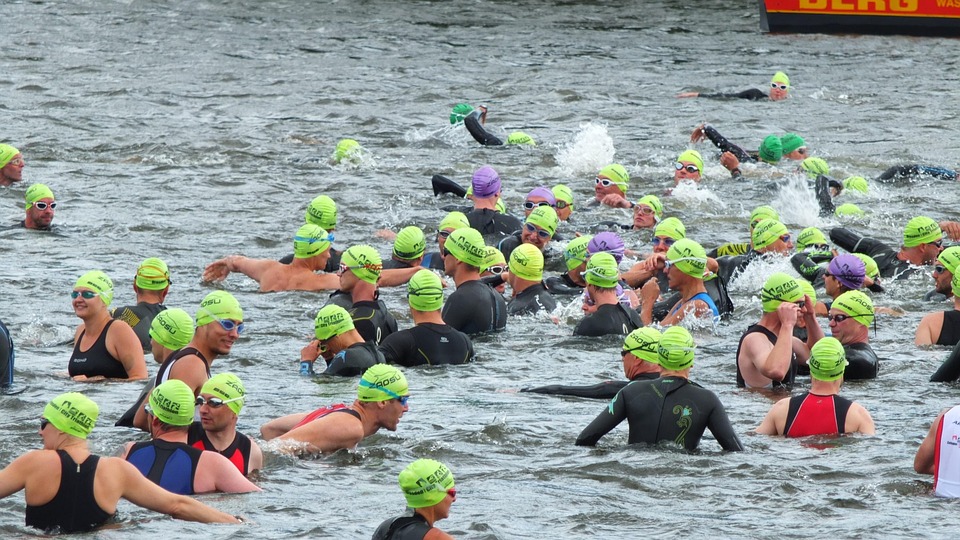Triathlons Unleashed: The Ultimate Test of Endurance and Grit
Introduction
Triathlons, a grueling multi-sport endurance race that combines swimming, cycling, and running, have become increasingly popular over the past few decades. Illustrative of both physical endurance and mental tenacity, triathlons attract athletes of all levels— from novices dipping their toes in the competitive waters to seasoned professionals aiming for podium spots. This article explores the origins of triathlons, their structure, physical demands, training regimes, and the mental resilience required to excel in these challenges, underscoring their popularity as the ultimate test of both endurance and grit.
Historical Perspective
The roots of the triathlon can be traced back to the early 20th century. While variations of multi-sport events existed, the modern triathlon began to take shape in the 1970s in the United States. The first officially recognized race was held in San Diego, California, in 1974. Since then, the sport has evolved, leading to the establishment of various formats such as sprint, Olympic, Half-Ironman, and Ironman distances.
The Ironman series, conceived by John Howard and then popularized by Dave Scott and Mark Allen, quickly gained notoriety for its rigorous demands on both the body and mind. The inaugural Ironman event, held in Hawaii in 1978, saw just 15 competitors. Fast forward to today, and thousands of athletes from around the globe participate in Ironman races, pushing the boundaries of human endurance.
Triathlons have also made their mark in the Olympic arena, with the sport being officially included in the 2000 Sydney Olympics. This not only legitimized the sport but also inspired a new generation of triathletes.
Structure of a Triathlon
A standard triathlon comprises three segments: swimming, cycling, and running.
-
Swimming: The swim segment traditionally takes place first and can range from 750 meters (0.47 miles) in a sprint triathlon to 3.86 kilometers (2.4 miles) in an Ironman. Conditions can vary greatly depending on the location, from calm lakes to choppy ocean waters.
-
Cycling: Following the swim, athletes transition to the bike segment, usually covering distances from 20 kilometers (12.4 miles) in a sprint to 180 kilometers (112 miles) in an Ironman. The cycling discipline tests endurance and speed while requiring tactical thinking regarding pacing and nutrition.
- Running: Finally, participants complete the race with a run segment. This typically involves a 5-kilometer (3.1 miles) distance in sprint triathlons and culminates in a marathon distance (42.195 kilometers or 26.2 miles) for Ironman events. The run often proves to be the true test of exhaustion, as legs that have already swum and biked for hours now face the demands of running.
Physical Demands of Triathlons
The combination of three distinct sports makes triathlons a comprehensive test of physical fitness. Athletes must train specific muscle groups while also enhancing their cardiovascular endurance.
-
Strength and Endurance: Each segment requires different forms of strength. Swimming emphasizes upper body strength and core stability, cycling focuses on leg muscles, and running is primarily a test of lower body endurance. Training typically emphasizes periodization, where the athletes cycle through phases of building endurance, strength, and speed.
-
Technical Skills: Apart from raw strength, triathletes must develop technical skills for each discipline. Efficient swimming techniques, cycling aerodynamics, and running gait must be honed to minimize energy expenditure.
-
Nutrition: Fueling the body during these events is crucial. Endurance athletes often adopt a diet high in carbohydrates to stock glycogen stores and strategically use energy gels, bars, and hydration solutions during races. Understanding nutrition can make or break a triathlon experience.
- Injury Prevention: The strenuous nature of triathlons poses a risk for overuse injuries. Common injuries include swimmer’s shoulder, cyclist’s knee, and runner’s ankle. Effective training should include strength training and flexibility work to prevent injuries and ensure longevity in the sport.
Mental Attributes Required for Success
While the physical aspect of triathlons is substantial, the mental component is equally vital. Athletes often find themselves wrestling with physical pain, exhaustion, and doubts during races. Mental toughness— defined as the ability to remain motivated, focused, and resilient under pressure—is the cornerstone of a successful triathlon.
-
Goal Setting: Setting realistic and challenging goals can enhance motivation and focus. Accomplishing goals, no matter how small, builds confidence and fosters a positive mindset, especially when training for longer distances.
-
Mindfulness and Visualization: Techniques such as meditation, mindfulness, and visualization can help athletes prepare mentally. Visualizing the race, from transitioning through segments to crossing the finish line, helps in emotional regulation and focus.
-
Coping Strategies: Athletes often face discouragement and fatigue. Developing coping strategies, such as positive self-talk, establishing a support network, and having fail-safes for setbacks, ensures they can handle the emotional rollercoaster of a triathlon.
- The Power of Community: Being part of a triathlon community—be it a local club or online group—can provide athletes with a much-needed support system. Community fosters camaraderie and encourages shared experiences that amplify motivation and commitment.
The Training Regime: Building a Triathlete
Training for a triathlon is all about balancing the three disciplines while ensuring adequate rest and recovery. This often involves creating a training plan that incorporates a mix of swimming, cycling, and running sessions, as well as strength training and flexibility workouts.
-
Periodization: Training plans are often divided into phases that emphasize different aspects of fitness: base-building, speed, and tapering.
-
Brick Workouts: These involve doing a swim followed by a bike ride or a bike ride followed by a run continuously. These workouts help simulate race conditions and improve transition times between segments.
-
Rest and Recovery: Adequate recovery is paramount in preventing burnout and injury. Athletes must prioritize rest days and incorporate lighter training weeks into their program.
- Cross-Training: Incorporating other forms of exercise such as yoga and strength training can enhance flexibility and core strength, thereby improving overall performance.
Overcoming Challenges
Every triathlete faces challenges, whether it be injury, unexpected weather conditions on race day, or mental blocks. Developing resilience and the ability to adapt is key.
-
Injury Recovery: When injuries occur, a focus on rehabilitation and preventative strategies can help athletes return stronger than before.
-
Race Day Prep: Planning for various scenarios—such as inclement weather or race course changes—ensures that an athlete is prepared for the unexpected.
- Mental Blocks: Strategies for overcoming mental hurdles, such as acknowledging feelings of anxiety or fear, and re-engaging with motivational techniques can help athletes perform at their best.
Conclusion
Triathlons represent more than just a test of physical endurance; they embody the human spirit’s capacity for resilience. Training for and completing a triathlon requires dedication, endurance, and grit—qualities that resonate far beyond the finish line. The sport cultivates a sense of community and belonging, encouraging individuals to strive for and achieve personal glory. Ultimately, triathlons foster a belief that with commitment and determination, we can push ourselves beyond limits we once thought impossible.
References
-
Joyner, M. J. (2019). "Endurance: The Science of Sports Fitness". Modern Footnote Publishing.
-
Maffetone, P. (2017). "The Big Book of Endurance Training and Racing". Modern Footnote Publishing.
-
McCormack, M., & Zawadzki, C. (2021). "Mind Over Matter: The Psychology of Endurance Sports". Modern Footnote Publishing.
-
Galloway, J. (2018). "Running: A Love Story". Modern Footnote Publishing.
- Jones, G. (2020). "The Complete Guide to Triathlon Training". Modern Footnote Publishing.
(Continue with additional sections as needed.)


























Add Comment